
News
DJI Zenmuse H20T vs XT2 vs FLIR Vue TZ20-R
An in-depth comparison between the DJI Zenmuse H20T, FLIR Vue TZ20-R, and DJI Zenmuse XT2 thermal cameras for drones. ... Read More

Find out how the Zenmuse H20T, XT2 and Flir Vue TZ20-R thermal cameras compare;
The TZ20-R has a more powerful zoom for thermal than the H20T and XT2;
The H20T offers greater versatility than the TZ20-R and XT2, offering thermal, wide-angle, zoom, and laser rangefinder capabilities;
All three cameras are able to achieve a 640 x 512 thermal resolution;
The H20T, TZ20-R, and XT2 can be integrated with DJI drones.
From helping to search for a missing person, to identifying a defect on a powerline - a thermal camera integrated with a drone is a powerful solution for commercial operators.
Realising the potential of this technology and the benefits it can bring to enterprise UAS programmes, a range of thermal sensors have been introduced to the market over recent years to collect more accurate and better quality data from the air.
The advancement in thermal drone technology is epitomised by two of the most recent thermal payloads to be released to the industry - the DJI Zenmuse H20T and the FLIR Vue TZ20-R.
But how do they compare? And how do they stack up against the older DJI Zenmuse XT2, which has become a firm favourite and a reliable solution for commercial drone operators since its release almost three years ago.
This in-depth comparison blog will focus on the key differences between the three.
DJI Zenmuse H20T vs FLIR Vue TZ20-R vs DJI Zenmuse XT2 - Key Specs
H20T | TZ20-R | XT2 | |
Weight | 828±5g | 640g | 25 mm: 629 g Other lens versions: 588 g |
Dimensions | 167 x 135 x 161 mm | 128 x 154 x 141 mm (with gimbal) | 25 mm lens: 123.7 x 112.6 x 127.1 mm Other lens versions: 118.02 x 111.6 x 125.5 mm |
Compatible DJI Aircraft | M300 RTK | M300 RTK M200 Series V2 | M300 RTK M200 Series V2 M600 Pro |
Camera Array | Thermal camera; 20MP Zoom Camera with up to 200x zoom; 12MP Wide Camera; 1200m Laser Rangefinder | Dual thermal zoom with two Boson sensors | Thermal camera; 12MP Visual Camera |
Thermal Resolution | 640 x 512 | 640 x 512 | 640 x 512 336 x 256 |
Zoom | Digital Zoom on thermal camera: 1x, 2x, 4x, 8x | 5x optical (WFOV/NFOV), 4x digital. Effective zoom: 1x (95°), 2x, 5x, 10x, 20x (4.5°) | Digital Zoom: 640 x 512: 1x, 2x, 4x, 8x. 336 x 256: 1x, 2x, 4x |
Pixel Pitch | 12µm | 12µm | 17µm |
Sensitivity (NEdT) | ≤50mK @ f/1.0 | 85mK @ f/1.0 | ≤50mK @ f/1.0 |
FOV | DFOV: 40.6° | Wide: 95° Narrow: 18° | Depends on the lens |
Operating Temperature | -20°C to 50°C | -20°C to 60°C | -10°C to 40°C |
IP Rating | IP44 | IP44 | IP44 |
The Cameras
Clearly the thing that aligns all three of these cameras is their thermal capability.
However, they are also all quite different, with their own distinct features.
For instance, the thermal camera is just one part of the DJI Zenmuse H20T. This sophisticated quad-sensor solution also incorporates a 12 MP wide camera, a 20 MP zoom camera (200x max zoom), and a 1200m laser rangefinder.
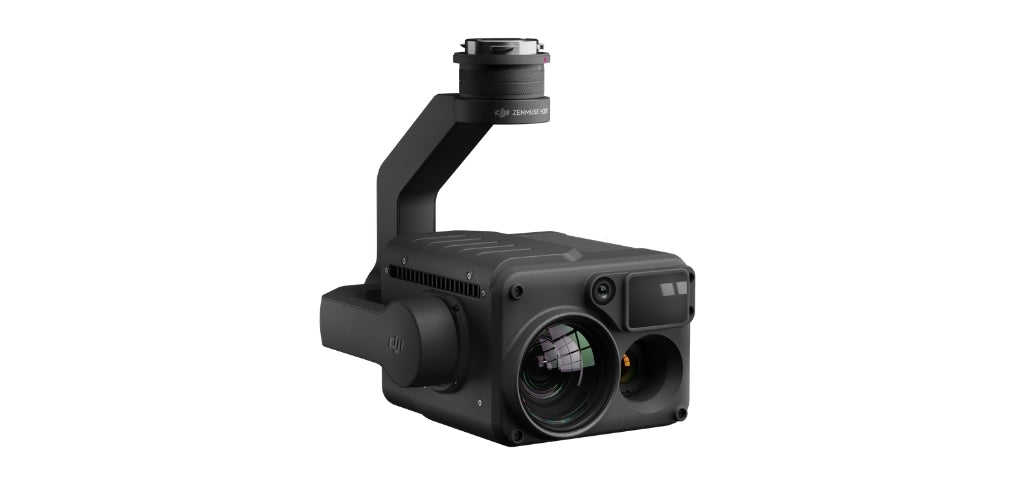
This quartet makes the H20T an extremely versatile camera, offering a variety of options for a variety of missions - aiding efficiency and collecting a cross-section of data assets.
In contrast, the FLIR Vue TZ20-R is a dedicated thermal camera, powered by two Boson cameras for a dual thermal zoom solution. These sensors provide two fields of view (wide and narrow); a real bonus for operators. More of this later.
The FLIR Vue TZ20-R has replaced the TZ20: Essentially the same camera, but the newer version has radiometric capabilities.
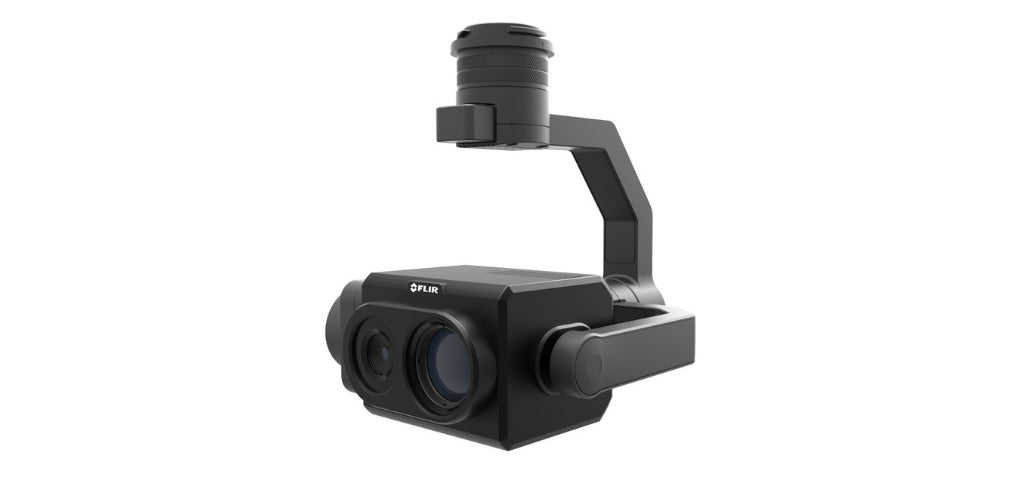
The XT2 is something in between, pairing the FLIR Tau 2 thermal sensor with 4K visual camera.
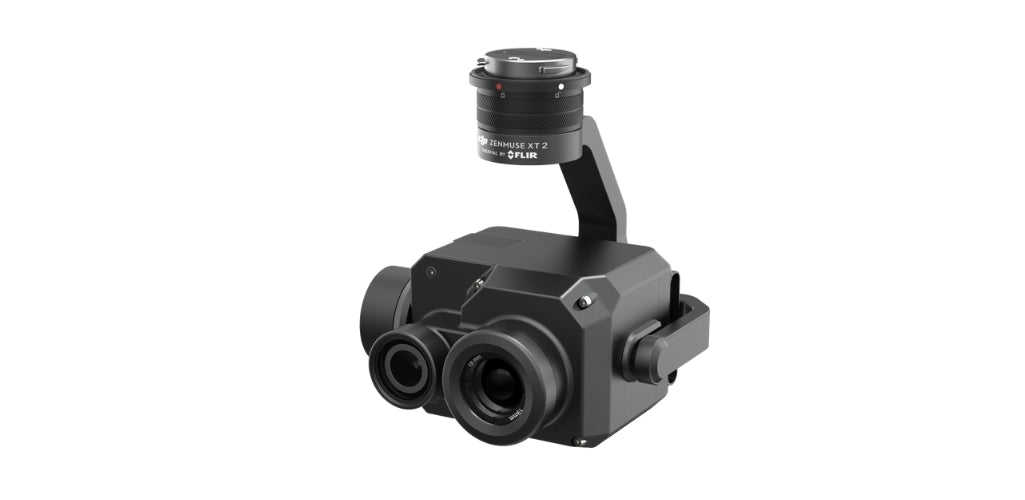
Supported Aircraft
All three cameras can be integrated with DJI's flagship commercial platform, the M300 RTK.
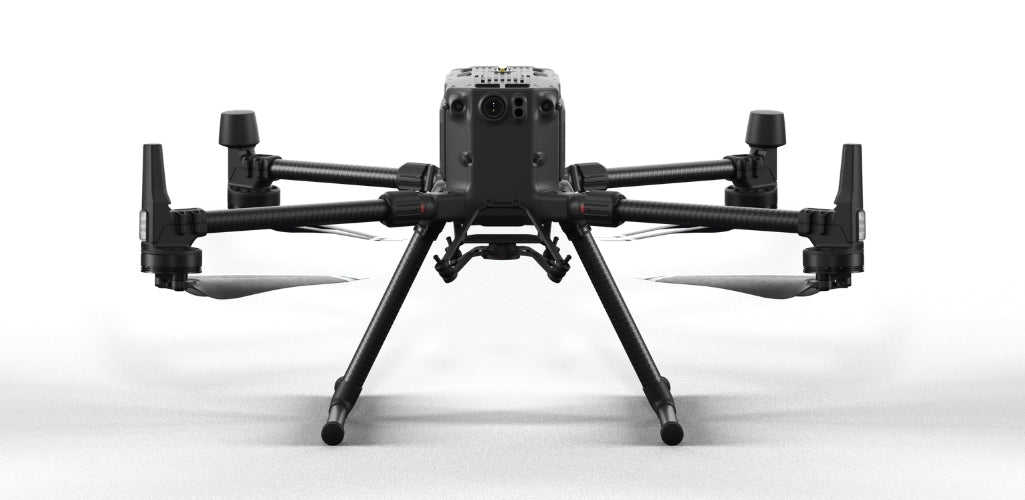
The aircraft can achieve an incredible 43 minutes of airtime when carrying the H20T, or 45 minutes with the XT2 - giving operators a tremendous amount of airtime to capture plenty of data.
The FLIR Vue TZ20-R has recently become available, so flight-time information is not currently available. A FLIR spokesman has said though that the camera won't have a negative impact on flight time.
Both the TZ20-R and the XT2 can be integrated with the DJI M200 Series V2; the M300 RTK's predecessor.
With the XT2, operators can achieve the following flight times:
M200 V2: 31 minutes
M210 V2: 28 minutes
M210 RTK V2: 27 minutes
These times are ample, but clearly not on par with the M300 RTK.
The XT2 can also be flown on the DJI M600 Pro (around half-an-hour flight time) and the original M200 Series (V1) - making it the most versatile camera out of the three when it comes to drone compatibility.
In contrast, the H20T was specifically engineered for the M300 RTK, so currently it can only be used with this aircraft. This is not a bad thing, though, as the M300 RTK is DJI's stand-out platform and more advanced than the M200 Series.
Read our comparison blog, here.
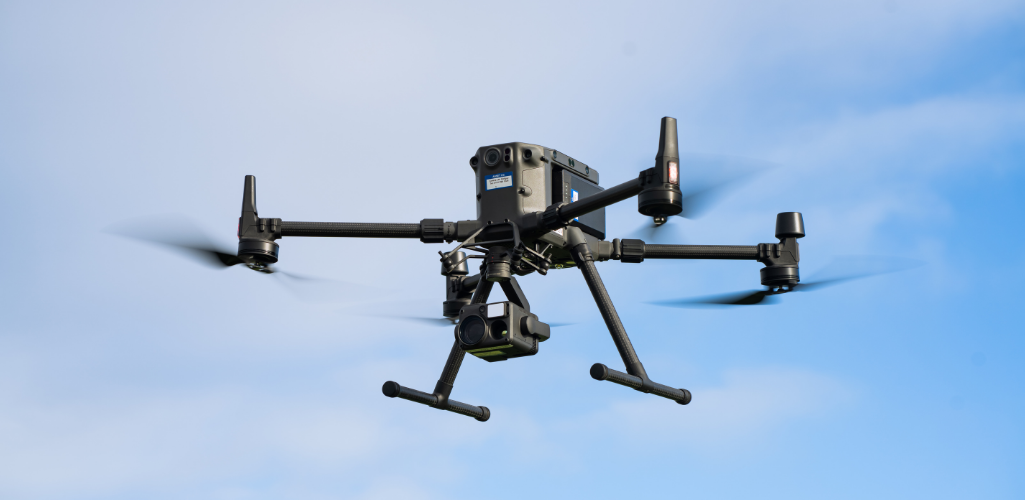
One of the benefits of deploying aircraft such as the M300 RTK, M210 V2 and M210 RTK V2 is their multiple payload capability. This means that the H20T, TZ20-R, or XT2 can be carried alongside other payloads, such as the Wingsland Z15 Bright Spotlight, to help missions.
As an aside, the M300 RTK can carry up to three payloads; the M210 and M210 RTK can carry two at a time.
The H20T and XT2 natively integrate with their respective DJI aircraft, while the plug-and-play TZ20-R can be connected via the Skyport V2.0 gimbal.
Thermal Capability
As mentioned previously, the thing that this trio of cameras has in common is thermal imaging.
So, how do their thermal imaging credentials stack up?
Thermal Resolution
The H20T-R and the TZ20-R achieve a 640 x 512 resolution at 30Hz. The XT2 can yield 640 x 512, as well as 336 x 256 - depending on the lens selected. It can achieve full frame rates of 30 Hz, and exportable frame rates of <9 Hz.
When it comes to the resolution (ie 640 x 512, or 336 x 256), the first value represents the horizontal pixel count and the second number represents the vertical pixel count.
It is a common assumption that 640 x 512 is twice the resolution of 336 x 256 but in fact, the total pixel count is 3.8x more. 336 × 256 delivers 86,016 total pixels and 640 × 512 delivers 327,680 pixels.
Firefighter Rich Gatanis, of Southern Manatee Fire & Rescue, had hands-on experience comparing the Zenmuse H20T and XT2 for HazMat operations.
In his opinion, the H20T blows the XT2 out of the water, describing the H20T's thermal resolution as 'crazy' and saying there is 'a night and day difference in the amount of detail between the H20T and XT2'.
Speaking at DJI's 2020 AirWorks conference, he posted this image to demonstrate the fact.
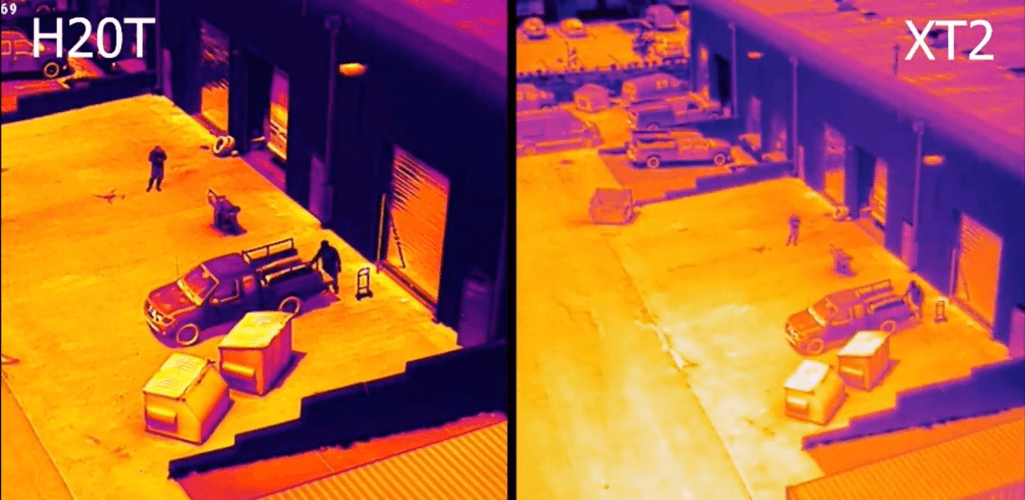
Field of View and Zoom
The FLIR Vue TZ20-R is a dedicated thermal zoom dual payload. Unsurprisingly, it comes into its own in this department.
This system provides a wide 95-degree horizontal field of view (4.9 mm effective focal length) for maximum situational awareness and a narrow 18-degree horizontal field of view (24 mm effective focal length) to put more pixels on target when needed.
Operators can quickly hone in on a target of interest with 2x, 5x, 10x, and 20x zoom. As these images show below, this 20x zoom is a powerful feature.
Utilities inspection: 2x (below, left); and 5x zoom (below, right)

Utilities inspection: 10x (below, left); and 20x zoom (below, right)
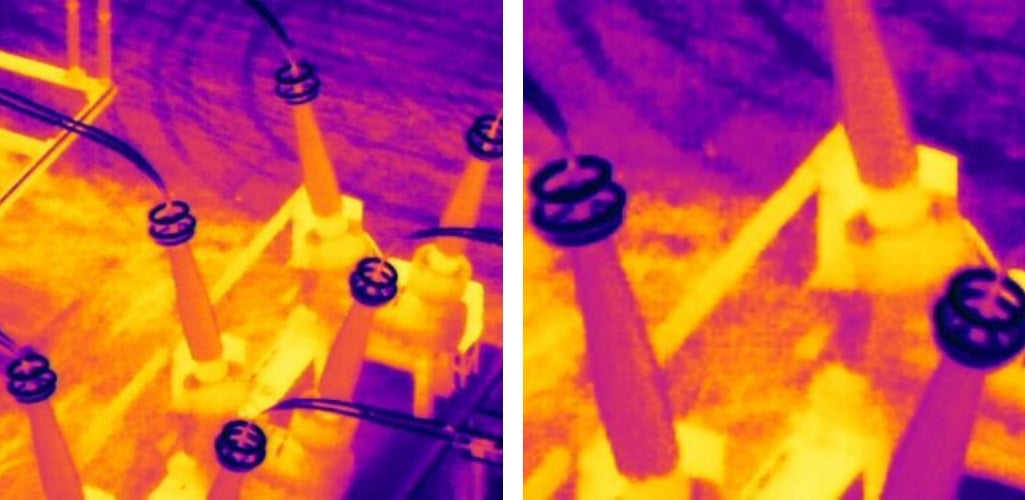
The H20T and XT2 cannot match this level of zoom, or such a sweeping field of view. But they do have zoom ability.
The H20T can achieve 1x, 2x, 4x and 8x digital zoom, while the XT2 is capable of up to 8x zoom at 640 x 512 and 4x at 336 x 256. The images below show the difference between the H20T and XT2 at 8x zoom.
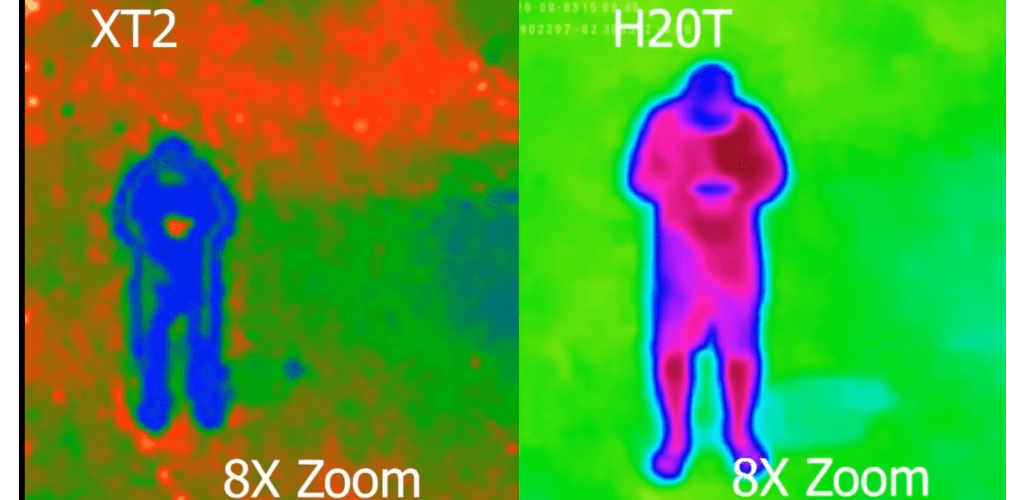
As for the field of view, the H20T has a 40.6° diagonal field of view (focal length of 13.5 mm, F1.0).
Operators using the Zenmuse XT2 have the ability to switch lenses and the FOV depends on which is used - as the table below shows.
Thermal Lens Models | 9 mm | 13 mm | 19 mm | 25 mm |
640 x 512 FoV / iFoV | N/A | f/1.25 45° x 37° 1.308 mr | f/1.25 32° x 26° 0.895 mr | f/1.1 25° x 20° 0.680 mr |
336 x 256 FoV / iFoV | f/1.25 35° x 27° 1.889 mr | f/1.25 25° x 19° 1.308 mr | f.1.25 17° x 13° 0.895 mr | N/A |
Min Focus Distance | 3.2 cm | 7.6 cm | 15.3 cm | 30 cm |
Hyperfocal Distance | 2.1 m | 4.4 m | 9.5 m | 21 m |
Hyperfocal Depth of Field | 1.1 m | 2.2 m | 4.8 m | 11 m |
Pixel Pitch and Thermal Sensitivity
Pixel pitch and thermal sensitivity are important considerations for thermographers.
The pixel pitch, or distance between the individual pixels, is critical in determining how many pixels - the detector’s eyes - can be fabricated on a silicon wafer. The goal is to reduce the surface area of the detector by making the pixel pitch smaller.
The H20T and the TZ20-R benefit from a decent 12µm pixel pitch, giving them a higher resolution than the XT2's 17µm. An image from the XT2 is pictured below.
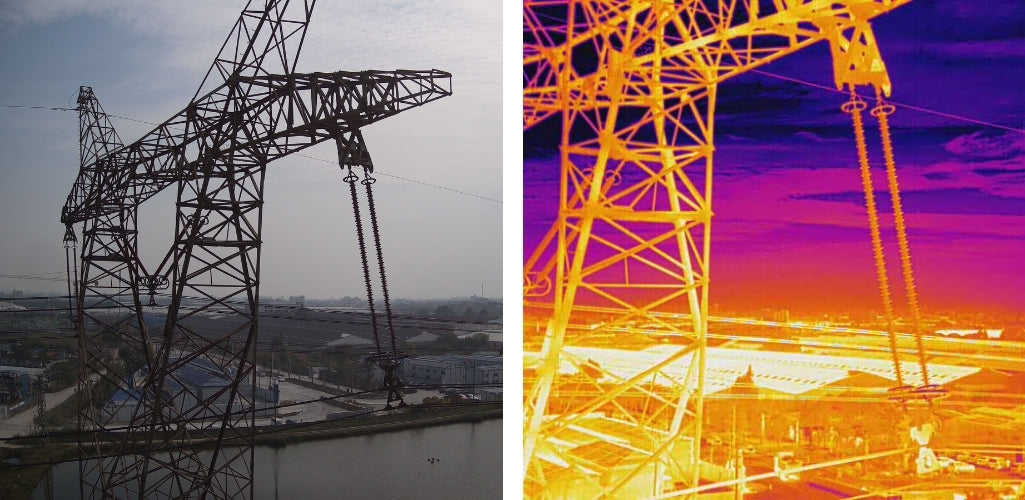
One of the most important parameters characterising the quality of a thermal imaging detector/sensor is the Noise Equivalent Temperature Difference (NETD) which describes its thermal sensitivity. This parameter is measured in millikelvin (mK) and denotes when the temperature value signal is equal to the noise signal.
When in use, a thermal imaging detector registers not only useful signals but also noise; which interferes and prevents it from producing a clear, quality image.
Therefore, the lower the NETD value (specified in millikelvin (mK) the better the sensor can register small temperature differences.
With this in mind, how do the cameras perform? The H20T and XT2 both achieve ≤50mK @ f/1.0, while the TZ20-R's thermal sensitivity is 85mK @ f/1.0.
Radiometric v Non-radiometric
Radiometric thermal cameras display a thermal image and provide temperature data within the image for post-processing, while non-radiometric thermal cameras display only the thermal image to highlight relative temperature differences.
The H20T, TZ20-R and the XT2 are all radiometric. Incidentally, the TZ20-R replaces the TZ20 which was non-radiometric.
Image And Video Files
When it comes to thermal operations, the H20T stores its videos in the MP4 format and imagery in R-JPEG (16-bit).
R-JPEGs contain temperature information in each pixel. Thermal imagery collected by the H20T can be processed and analysed via the DJI Thermal Analysis Tool.
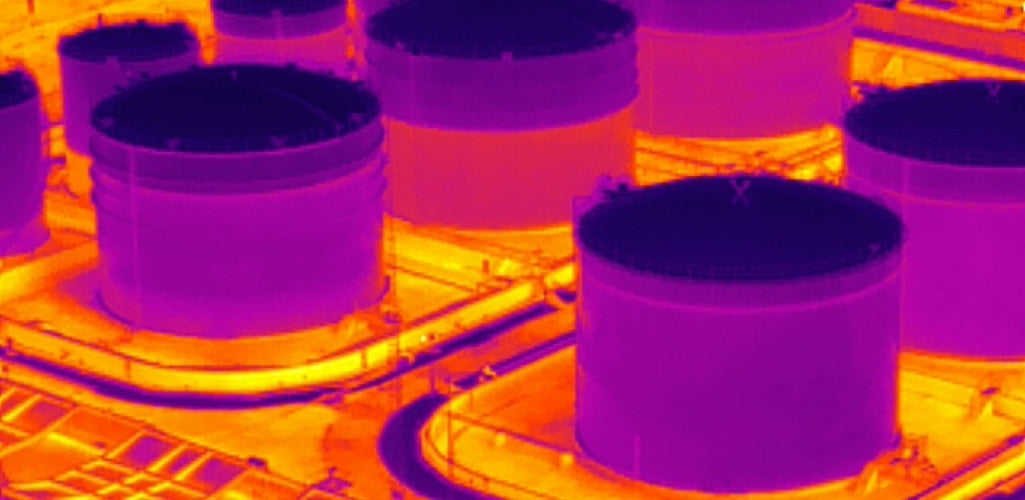
As an aside, the H20T saves MP4 videos and J-PEG imagery when using the zoom or wide-angle sensors.
The camera supports MicroSD cards (Max capacity: 128 GB, UHS-1 Speed Grade 3 required).
Operators of the FLIR Vue TZ20-R can record in-flight on two included Micro SD cards. Video can be captured in MPEG (same as streaming) and radiometric CSQ, and imagery can be JPEGs or TIFF files, when using the app.
The below images show a search and rescue mission, using the TZ20-R, at 5x and 20x zoom.
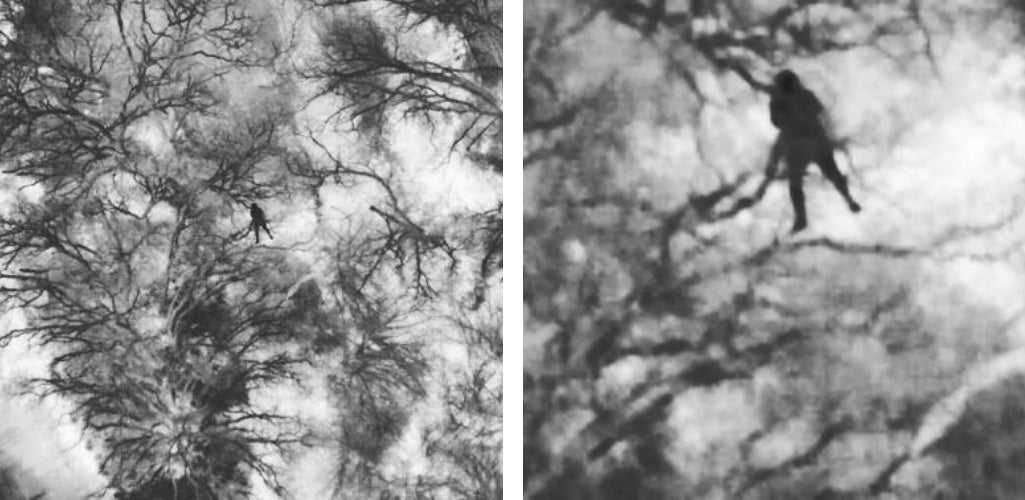
Due to the XT2’s dual sensor design, DJI built in two SD card slots. One stores typical photo and video formats while the other is reserved for thermal video data, which stores the full radiometric data from the thermal sensor, enabling a variety of post-processing workflows.
Photos | Videos | |
Slot 1 | JPG,. TIFF, R-JPEG | MP4, MOV |
Slot 2 | TIFF SEQ, SEQ |
The XT2 can capture R-JPEG imagery and, as the sensor is manufactured by FLIR, the files can be analysed by FLIR tools.
The XT2 comes with two 32GB Micro-SD cards.
Thermal Features
All three cameras come with an array of additional features to help operators collect the best data possible.
The trio can display information in a variety of palettes, meaning that the colours applied to the thermal data can be adjusted based on the needs of specific scenarios. They also have have dynamic scene ranges - such as high gain and low gain - enabling changes to the temperature range captured.
As a general rule of thumb, low gain is better for temperatures below 143°C, while high gain is better for operations, such as utilities and firefighting.
This image below shows the XT2 in action.
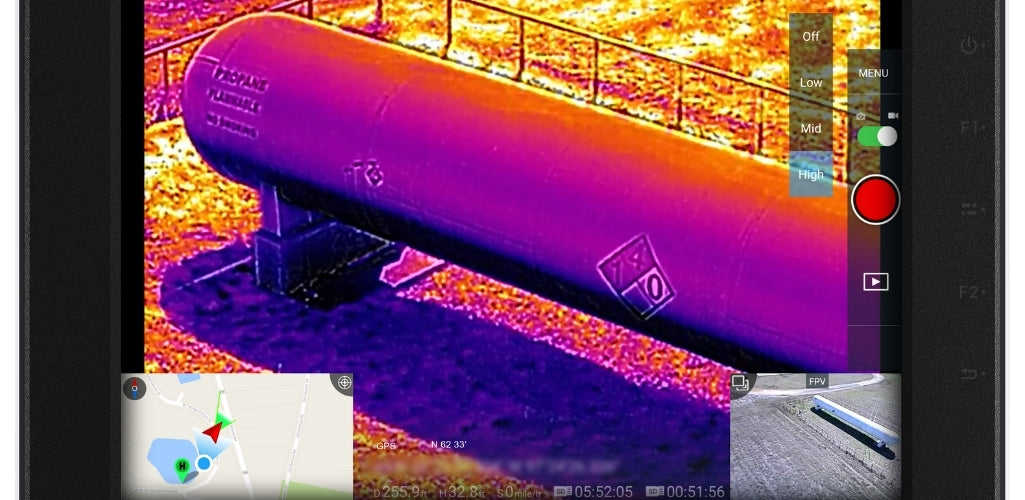
The H20T has features such as Spot Meter (tap a point to get a real-time reading of the surface temperature); Area Measurement (select an area to view the lowest, highest, and average temperatures); and Temp Alarm (instant notifications in DJI Pilot when object temperatures exceed your preset alert values).
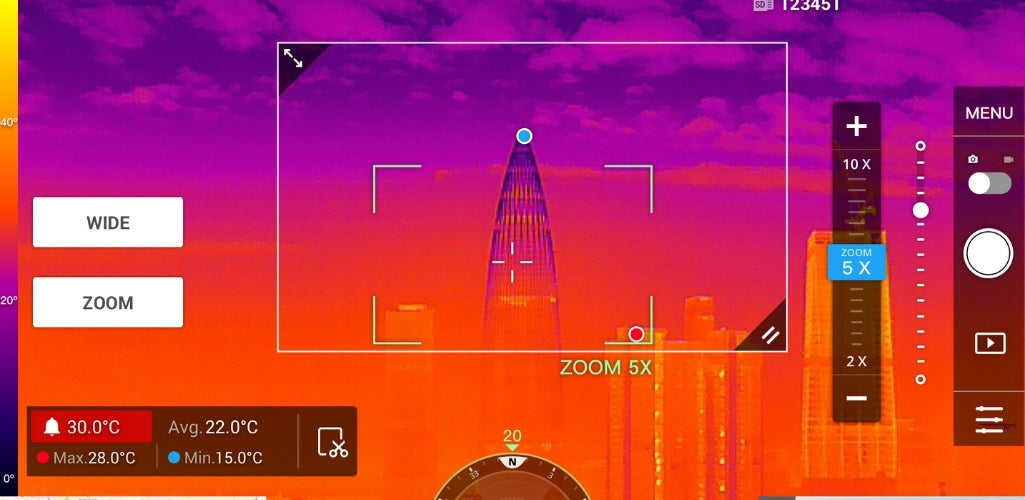
Temp Alarm is a feature on the XT2, which also has modes such as Heat Track (lock the XT2 onto the hottest object in view).
The FLIR Vue TZ20-R has features such as Automatic Gain Control Region of Interest. Automatic Gain Control lock holds a constant temperature to the colour when moving.
Operating In Wet Weather
The M300 RTK and the M200 Series V2 are IP-rated, ensuring they can be used in difficult weather conditions, including a certain amount of rain. The M300 RTK is IP45 rated, while the M200 Series V2 is IP43 - although this is not a complete waterproofing.

The H20T, FLIR Vue TZ20-R, and XT2 are all IP44 rated. What does this mean?
The first digit relates to solid objects, while the second number references its protection against liquids.
So, in the case of all three cameras, they are protected against solid objects greater than 1mm, such as wires and screws, and are protected against water splashed from all directions. But, remember, an IP44 rating is not a complete waterproofing.
For a guide on IP ratings, read our How Waterproof Is The DJI M300 RTK drone? blog.
The three cameras' ability to stand up to extreme weather is further characterised by their operating temperature.
The H20T performs in temperatures from -20°C to 50°C, while the TZ20-R has an operating temperature range of -20°C to 60°C. The XT2 lags slightly behind, but with the ability to handle temperatures ranging from -10° to 40°C, it is still a hardy system.
DJI Zenmuse H20T vs FLIR Vue TZ20-R vs DJI Zenmuse XT2 - Summary
Drone thermal imagery is in high demand, so it is vital that the cameras can meet the requirement for this type of data.
In the case of the H20T, TZ20-R, and XT2, these high-class sensors are up to the job, providing crucial insights for operators in public safety, law enforcement, industrial inspection, and agriculture.
When it was released in March 2018, the XT2 - with its potent mix of DJI and FLIR expertise - set the bar high, and knocked the original XT out of the park.
But the more recent H20T (unveiled in spring 2020), followed by the TZ20-R show a progression in drone thermal camera capabilities.
All three cameras are different in their offering, and have their own features which make them stand-out, especially the H20T and TZ20-R.
The FLIR Vue TZ20-R is a dedicated dual thermal zoom payload. The 20x zoom, and the ability to switch between a wide and narrow field and view, is a major draw. The image below shows the sensor's 5x and 20x zoom.

The H20T can't match this, but it it a quality thermal sensor, with an 8x zoom and matching the TZ20-R's 640 x 512 px resolution at 30 Hz.
But it's real strength is that the thermal imagery is just the start. A quad-sensor solution, it packs in thermal, wide-angle, zoom, and laser rangefinder capabilities in one payload for greater mission efficiency.
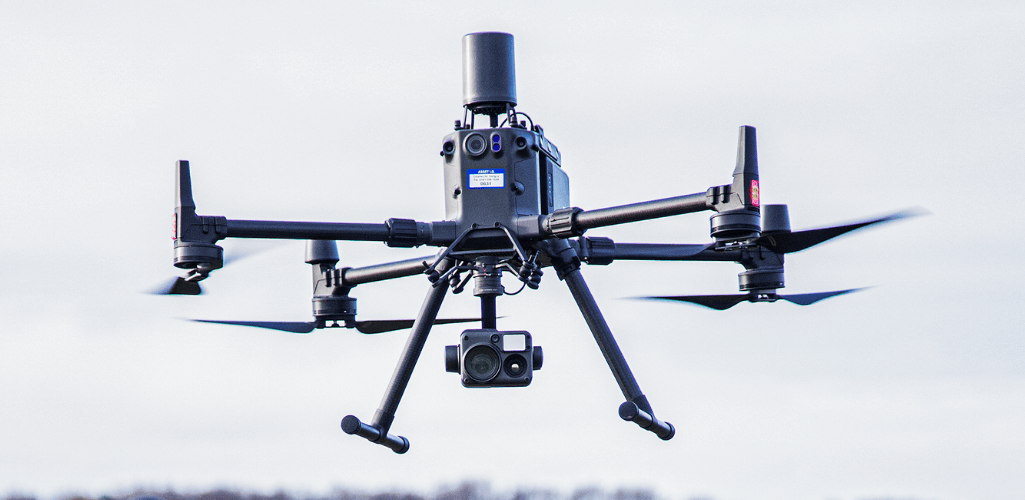
All three thermal cameras, and the drones mentioned in this article, are available at heliguy™.
